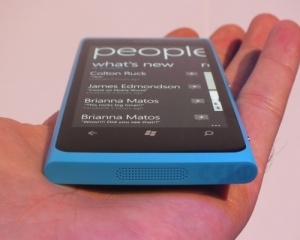Microsoft scraps Windows Phone update tracking

Microsoft will no longer give Windows Phone customers detailed information on the progress of updates for their handsets.

Windows Phone customers will no longer be able to see whether their operators are working on giving them updates to the smartphone OS, Microsoft has said. Photo credit: Ben Woods
In a weekly Windows Phone blog post on Friday, customer experience engineering general manager Eric Hautala said Microsoft will no longer break down upcoming changes to the OS by country, model and operator on its 'Where's My Phone Update?' page. He also noted that carriers can refuse to adopt updates for their Windows Phone customers.
Unless a customer has an unlocked smartphone that is not tied to any particular operator, they have to wait for updates to pass through their operator's testing and customisation process before it hits their handset.
The 'Where's My Phone Update?' page has provided a service to customers by tracking the progress of each update through the process, noting whether it is in the testing, scheduling or delivery phase. However, according to Hautala, this will be stopped "as we [Windows Phone] continue our growth".
"In the months ahead, we'll continue to send out firmware and maintenance updates as needed. These will be available across the globe — although not everybody will receive or require them. It depends on your country, carrier and phone model. But remember that you'll never have to guess when a Windows Phone update is waiting: Just watch for the pop-up notification on your device," Hautala wrote.
The Windows Phone team will also stop blogging about updates, he added, leaving the official Windows Phone site as the only source of information about changes. At the moment, that site provides information by linking to the 'Where's My Phone Update?' page.
Negative response
The blog post swiftly attracted a negative response from commentators, the very first of whom wrote that "the overall effort that you mentioned seems to take a step back from clear and transparent communication".
"I never fully understood how updates are deployed (how carriers play a role in it, and whether critical updates are guaranteed for every device), nor was it ever clearly explained," commentator Ousooner314 wrote. "This makes the whole process even more convoluted, and may be off-putting for several users who have championed the OS so far."
Commentator Darren Baker also protested, this time from the perspective of a Windows Phone app developer and Microsoft partner. He was particularly critical of Microsoft's decision to distribute updates only through carriers that request them.
"This is a mistake of major proportions," Baker wrote. "You entered your second year, customer satisfaction is at an all-time high and increasing. Making a change to allow the carriers to [ignore] updates hurts the end users, the hardware OEMs and ultimately the developers (and partners) that build applications for your platform."
"We will be going to the way it was, wondering why certain devices don't work the same or run the apps properly only to find out the carrier didn't apply a specific update," Baker added.
In his post, Hautala mentioned the latest update to Windows Phone, which started to roll out last week. Apart from fixing a 'disappearing keyboard' bug, the 8107 update revokes Digicert digital certificates "to address an encryption issue", and fixes an Exchange Server 2003-related email problem to allow original messages to be included in replies or forwards. A Google Mail syncing bug is also fixed in the package.
The update also continues Microsoft's quest to tame the collection by Windows Phones of location-based data. A fix in the update ensures that the 'Me' feature in the People Hub only sends anonymous information about nearby Wi-Fi access points and base stations to Microsoft when the user has agreed to allow the Check In function to collect such data.
Get the latest technology news and analysis, blogs and reviews delivered directly to your inbox with ZDNet UK's newsletters.